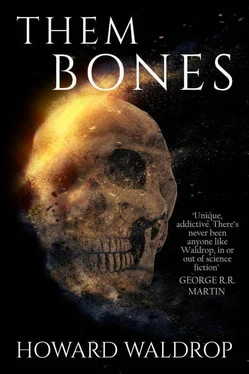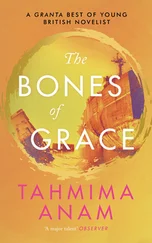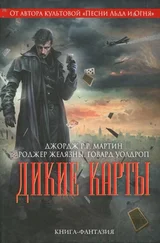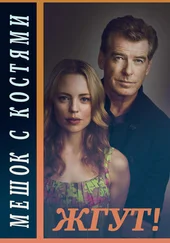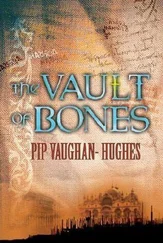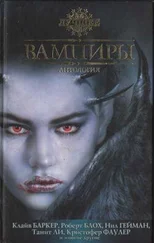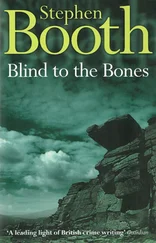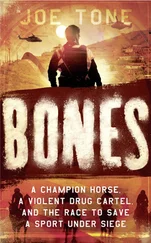It appeared around the bend.
It had been so long since I’d seen any machinery I’d almost forgotten what it was like. The prow appeared, broad, flat and low. Then the front of the second deck, then the third. All painted bright red with yellow stripes like a hot dog covered with mustard. There were tall fair figures on the deck.
They had horns.
There was the long blast of a whistle, then the roar of a foghorn. The people onshore jumped and held their ears. The ship turned in toward the canoe landing, the figure on the prow casting a plumbline again and again before him.
The craft had two paddlewheels amidships. Above the upper deck flew a pennon with a red scimitar on a white field.
The figures in the pilothouse wore bright red robes and turbans.
There was another blast on the horn and a long release of steam from somewhere amidships. The paddles stopped, reversed, backed water. The ship, as big as the temple mound, slid quietly into the landing, as stately as a hotel.
The front of the ship, a drawbridge type ramp, arced over slowly and jerked down to the ground of the bank.
There was another piercing whistle and the people of the village began to cheer.
A short man in a robe and turban, followed by others dressed in robes or leather pants and jerkins, carrying arquebuses and blunderbusses, stepped to the top of the ramp.
‘Took, my old friend,’ he said in Greek. ‘Tell Sun Man and your people hello and that we come to trade, even up, sky is the limit, for whatever and how much?’
Took turned to the people, nodded to Sun Man, made a short speech.
The people yelled wildly, jumped around, began laying their wares, skins, weapons, art and food out onto their blankets on the ground.
The men came down the planks, all smiles, holding their hands out to hug Took, and bow to Sun Man. The deckhands, some in loose pants and fezzes, others in their horned and beaked helmets, began unloading the trade goods of the ship into the open area above the landing.
‘This,’ said Took, ‘is Aroun el Hama, king of merchants.’
‘And this,’ he continued, ‘is Madison Yazoo Leake.’
‘Hello,’ I said in Greek.
He looked at me. He was small, with hard dark eyes, a coal-black beard and salt and pepper mustache. A small scar went from his left eyebrow to his missing left earlobe.
‘By Ibram,’ he said, ‘are you a southerner gone wild on us?’
‘No,’ I said, ‘much farther away than that, I fear.’
‘Your accent,’ said el Hama. ‘You learned the language nowhere I know.’
‘I’m sure you two will want to talk tonight,’ said Took. ‘Aroun, they’re going to kill us all if we don’t get some trading done.’ People were yelling and pointing to their goods all up and down the landing.
‘Yaz,’ said Took. ‘Give us a hand, will you?’ He pointed over to where one of the guys with a horned helmet was arguing in one language with a village woman arguing in another.
I went over to help. It took a while, what with my trouble with the moundbuilder language, and the accent of the northerner, a big red-headed dude, to find that they had argued the price both up and down and had passed the price they had both agreed to long before.
It was going to be a long hot day.
DA FORM 11614 Z 01 Jan 2003
Comp: 147TOE: 148
Pres for duty
115
KIA
13
KLD
3
MIA
11 For: S. Spaulding
MLDCol, Inf.
1 Commanding
Wounded, Hospby: Atwater, Willey
4 2Lt, Arm.
Total: 147act. Adj.
The day was overcast, humid and hot, and it was just dawn.
Bessie sketched the depressions around the mounds. They were there on the flood terrace, one west, one north, one eastnortheast. She drew in the bluff line. The mounds occupied the center. There were shallower areas around them. She flipped over the pages of her field book. Perhaps this had been a village site? But they’d found no post molds yet, no typical village structures. Maybe it had been a temporary habitation site, used only while the mounds were being raised.
Perch and the others arrived with the muddy sun. This time Perch was in work clothes, his tiny frame lost inside them.
They waited for him to get out of his car. Over at the trucks, the photographer and artists were getting out their equipment. Down below, the work crews were taking off the tarps from the mounds.
‘Governor’s still not back,’ said Perch. ‘Won’t be for two, three days. There seems to be a small mutiny in his party machine. Also’ – he looked down at the bayou – ‘we’re in for rain, lots of it. They’ve closed the gates downstream and opened the ones above. It’s raining like hell in Shreveport, and all up the Mississippi. They think this one might be as bad as the spring flood two years ago. I figure we got five, maybe six days.’
‘What about a coffer dam?’ asked Kincaid.
‘We can use part of the crews to work on it. I’ve sent to the University for maintenance crews with some tractors. I tried to get a hold of the highway department, but nobody’s doing anything until the governor gets back and they see who’s on top.’
‘That’s probably why he left,’ said Jameson. ‘Giving ’em enough rope.’
‘That’s why nobody’s answering their phones,’ said Perch.
‘Where do we put the dam?’ asked Kincaid. He opened the survey map. ‘Along the line of the old terrace?’
‘That’s way too big,’ said Jameson. ‘We’re going to have to decide whether we save Mound One or not. I say no.’
‘Bessie?’ asked Perch.
She looked at the far mound, totally typical, left unopened and alone with its grid markers. ‘We can’t take a chance on losing Two A and Two B,’ she said. ‘Oh, hell, what if it’s just as full of stuff as this one?’
‘Kincaid?’
‘Oh, hell with it. Put the dam here, just below Two A. Bring it back around to the bluff on each side, maybe dig drainage over here, if we can.’
Bessie looked at the grid map.
‘Dr. Perch, can we bring it out another ten feet, over here?’ She pointed past the eastnortheast shallow depression. ‘If we’ve got time, I want to dig here.’ She stabbed the map with her finger.
‘We won’t have time,’ said Jameson.
She told them about Basket and the flood legend.
They all looked at the shallow spots. ‘They could be nothing but burrow pits,’ Perch said. ‘That what you want to save?’
She had a moment of uncertainty. ‘Yes, I do.’
‘Call up the crews,’ said Perch. ‘The three of you get down there, go straight in and down on the mound. Find out what happened here. I haven’t been out in the woods for a long time, but I still know how to make dams.’ They had the dam outlined and shovels started to fly.
In the platform of Mound Two B, they found the first of the human skeletons by midmorning.
It lay, feet outward, directly below the test trench. William found the feet, and called Kincaid over. Slowly they removed dirt from the bones, to the pelvis, the ribcage, the shoulders.
There was no skull. The neck ended abruptly.
Kincaid dug to the right and left.
‘Bessie,’ he said, ‘get the shellac and come in behind me and coat the skeleton. We’ll leave it in situ . It’s brittle. There wasn’t any covering; this skeleton was just lain on the original ground line and the mound raised over it.’
Bessie dolloped thick globs of shellac onto the paper-soft bones, then slowly spread it with a fine brush.
Читать дальше
